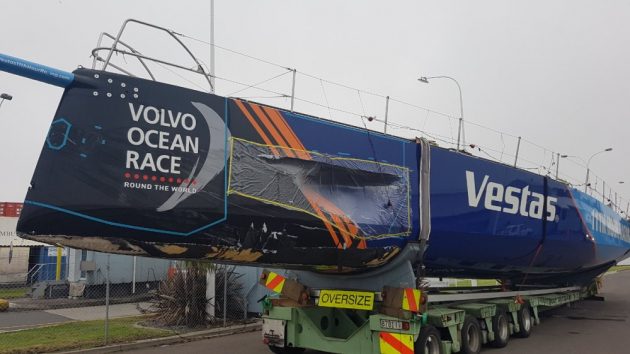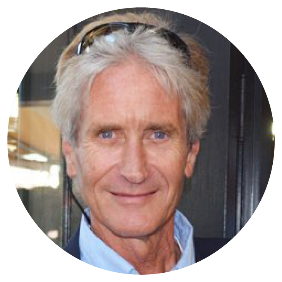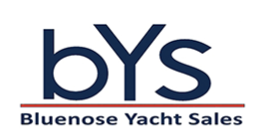The following is Mark Towill’s account of the fatal collision on the Hong Kong approach. Mark is the skipper of Vestas 11th Hour Racing on Leg 4 of the VOR.
We were about 30 nautical miles from the finish, and I was at the navigation station monitoring the radar and AIS (Automatic Identification System), and communicating with the crew on-deck through the intercom. I was watching three vessels on AIS: a cable layer, which we had just passed, a vessel farther ahead moving across our bow and away, and a third vessel identified as a fishing vessel. There were a number of additional boats on AIS, many of them fishing vessels, but these three were the only ones identified in our vicinity.It was a dark and cloudy night, with a breeze of around 20 knots and a moderate sea state. As we approached the fishing vessel that we had identified on AIS, the on-deck crew confirmed visual contact – the fishing vessel was well lit – and we headed up to starboard to keep clear. I was watching AIS and communicating the range and bearing to the crew. The crew confirmed we were crossing the fishing vessel when, before the anticipated cross, there was an unexpected collision.
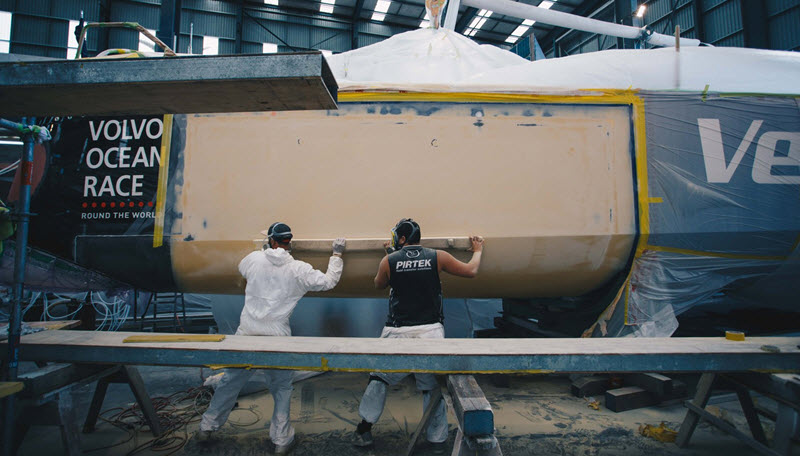
source: Sailing Scuttlebutt
So much happened so fast. The impact from the collision spun us into a tack to port that we weren’t prepared for. Everyone who was off watch came on deck. Everyone on our boat was safe and accounted for. We checked the bow, saw the hole in the port side and went below to assess the damage. Water was flowing into our boat through the hole, and there was concern over the structural integrity of the bow.We heeled the boat to starboard to keep the port bow out of the water. The sail stack was already to starboard and the starboard water ballast tank was full. We also kept the keel canted to starboard. We placed our emergency pump in the bow to pump water overboard. We were able to minimize the ingress, but the boat was difficult to maneuver because it was heeled over so much.
It took roughly 20 minutes to get our boat under control, and then we headed back towards the location of the collision. Upon arrival, several people on a fishing vessel nearby were shining lights to a point on the water. Our first thought was that they could be looking for someone, so we immediately started a search and rescue. After some time searching, we eventually spotted a person in the water.We tried to contact the other vessel involved in the collision, and alerted race control straight away. When we initiated the search and rescue, our navigator immediately issued a Mayday distress call over VHF channel 16 on behalf of the fishing vessel. There were many vessels in the area, including a cruise ship with a hospital bay, but they were all standing by.
Communication was difficult. The sheer volume of traffic on the radio meant it was hard to communicate to the people we needed to. Not many people on the VHF were speaking English, but we found a way to relay messages through a cable laying vessel, and they were able to send their guard boat to aid in the search and rescue. Difficult conditions and limited maneuverability hampered our initial efforts to retrieve the casualty. The guard boat from the cable layer provided assistance and every effort was made from all parties involved in the search and rescue. We were finally able to successfully recover the casualty after several attempts. When we got him aboard, our medics started CPR. We alerted Hong Kong Marine Rescue Coordination Centre that we had the casualty aboard and they confirmed air support was on its way. He was transferred to a helicopter and taken to a Hong Kong hospital where medical staff where unable to revive him.
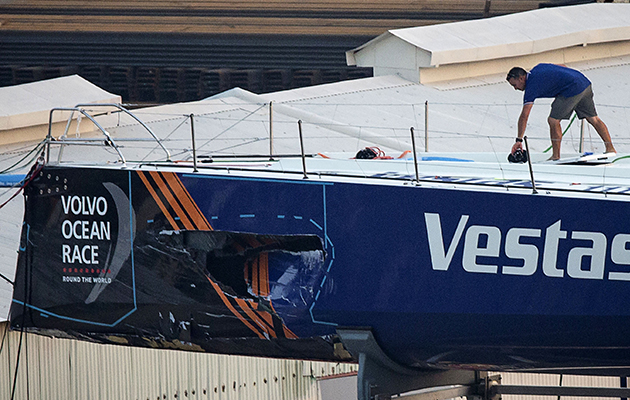
source:Yachting World
Dongfeng Race Team offered assistance. At the time, we were coordinating the search and rescue with multiple vessels, including the cable layer that had a crewman who spoke Chinese and English and was relaying our communication. We advised Dongfeng that they were not needed as there were a number of vessels in the area that were closer. Team AkzoNobel arrived while the air transfer was in effect. Race control requested that they stand by and they did, and we later released them once the helicopter transfer was complete.
Facebook https://www.facebook.com/BluenoseYachts/ (Like our page to receive updates!)
Twitter https://twitter.com/BluenoseYachts
Instagram https://www.instagram.com/bluenoseyachts/
Pinterest https://www.pinterest.com/bluenoseyachts/
Bluenose Yacht Sales home page https://www.bluenoseyachts.com/
For more on the collision click here http://www.yachtingworld.com/races/volvo-ocean-race/vestas-skipper-gives-his-account-of-fatal-collision-and-volvo-race-launches-report-into-racing-in-high-traffic-areas-113046
Feature image source: Yachting World






